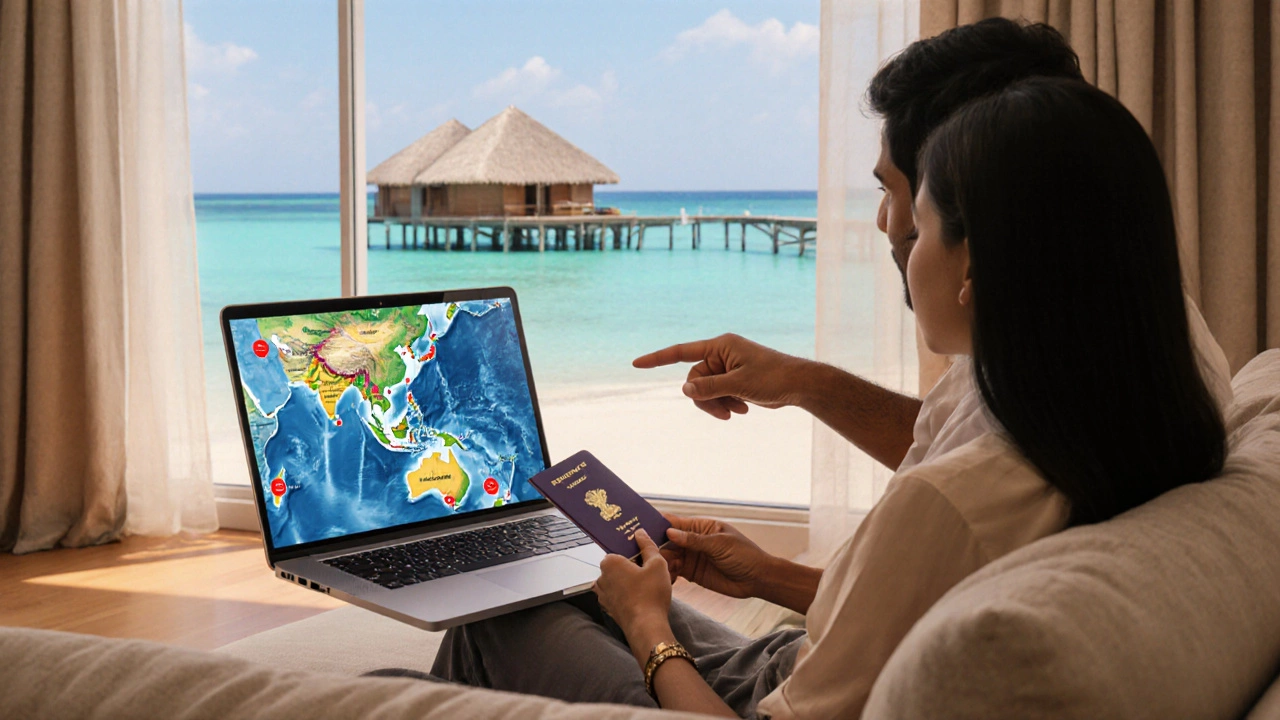
Find out if the Maldives is safe for Indian travelers in 2025, covering health, security, weather, visa rules and practical tips for a worry‑free trip.
When planning Maldives visa for Indian travelers, the official permission that lets Indian citizens step onto the Maldives islands for tourism, business or transit. Also called Indian Maldives entry permit, it is a type of Visa issued by the Government of Maldives to residents of India. Knowing the exact requirements saves time, money and last‑minute headaches.
There are three main categories you’ll encounter: a short‑stay tourist visa (up to 30 days), a business visa for meetings or conferences, and a transit visa if you’re stopping over on the way to another destination. All of them share a few core attributes – a passport valid for at least six months, a recent passport‑size photo, and proof of onward travel. Fees differ slightly; the tourist option usually costs around $30 USD, while business visas can be a bit higher. These attributes keep the process transparent and predictable.
Indian passport holders enjoy a convenient Maldives visa India option: you can obtain a visa on arrival at any international airport in Malé, or apply online for an e‑visa before you leave. The e‑visa route shortens the queue at the airport and lets you print the approval document at home. Just make sure your passport has a minimum six‑month validity, you carry a confirmed hotel reservation, and you can show proof of sufficient funds (about $100 USD per day). The on‑arrival form asks the same questions, so preparation is key.
Cost isn’t limited to the visa fee. Flight tickets from major Indian cities range from $250‑$500 USD round‑trip, depending on the airline and season. Keep an eye on the USD‑to‑INR exchange rate; a strong dollar means higher expenses on the ground. It’s wise to exchange some currency before you travel, but most resorts accept credit cards, so you won’t be stuck without cash. Understanding these financial details helps you budget the entire trip, not just the entry permit.
Safety-wise, the Maldives is a low‑risk destination. There’s no malaria risk, but you should stay hydrated and use sunscreen to avoid heat‑related issues. Travel insurance that covers medical emergencies and potential trip cancellations is strongly recommended, especially if you plan water sports. Knowing the health landscape lets you focus on snorkeling, not paperwork.
Applying for the visa is straightforward: visit the official Maldives Immigration website, fill out the online form, upload your passport scan and photo, and pay the fee via a secure gateway. After a short processing window (usually 24‑48 hours), you’ll receive an email with a PDF approval. Print it, attach it to your passport, and you’re ready for the flight. The step‑by‑step flow removes guesswork and speeds up your preparation.
Common slip‑ups include forgetting to bring the printed e‑visa document, not checking that your passport’s expiration date meets the six‑month rule, or under‑estimating the amount of cash you’ll need for island activities. Double‑checking these points before you leave the house prevents stressful airport moments.
Beyond the visa, a few extra tips can make your Maldives experience smoother. The dry season (November to April) offers the best weather for beach outings and diving. Respect local customs – dress modestly when visiting inhabited islands and always remove shoes before entering a local’s home. Finally, keep a small amount of local currency (Maldivian Rufiyaa) for tips and small purchases, even though many places accept cards.
Now that you’ve got the basics covered, the articles below dive deeper into related topics – from cost‑saving travel hacks for Indian tourists to safety checks and seasonal guides. Browse the collection to fine‑tune your itinerary and travel with confidence.

Find out if the Maldives is safe for Indian travelers in 2025, covering health, security, weather, visa rules and practical tips for a worry‑free trip.